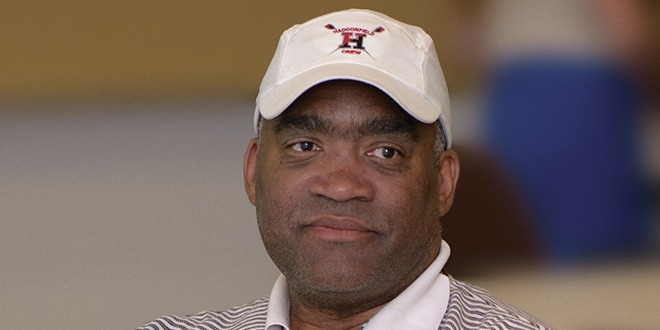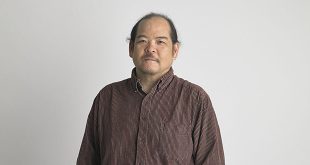People with type 2 diabetes write back to their younger selves, to share personal insights and reflect on their experience of living with diabetes and starting on insulin therapy. In this post, Gregory reflects on living with diabetes.
Before he entered middle age, Reverend Gregory, 49, had experienced more than his share of health challenges, many of which ran in his family. A busy pastor living with his family in Haddonfield, New Jersey, USA, he suspected that he might be developing type 2 diabetes, also because he had a family history of it. However, he says, “Whenever I got my blood tested, the doctor would say I was fine.”
Finally, when he was 43, after feeling sick, constantly thirsty and losing weight rapidly, he landed in the hospital and was diagnosed with type 2 diabetes. He began taking pills to regulate his blood sugar and eventually added insulin to his treatment plan. But managing his blood sugar proved very difficult. He experienced a number of episodes with too high and low blood sugar levels. In fact, not long after the diagnosis, Gregory was driving back from running a work training session when he began to feel extremely ill and lethargic due to too low blood sugar levels, or, hypoglycaemia. He pulled over to the side of the road and was ill. “My body was telling me something was wrong, but I wasn’t listening and I wasn’t watching for the signs,” says Gregory.
This turned out to be the first of several difficult incidents that Gregory has experienced due to unstable blood sugar levels during the past six years. He added insulin to his treatment plan four years ago. Here’s his letter to himself at 43, just after he had to pull over to the side of the road.
Dear Gregory
What just happened now is scary stuff. What if you hadn’t pulled over quickly enough and caused a car accident?
It could have happened, but it didn’t. Still, the lesson is that you need to listen – listen carefully – to your body. Hypoglycaemic episodes can be life changing. It can take a lot to recover from them. The better you become at knowing the signs of high or low blood sugar, watching for the signals and testing yourself, the better you will be able to feel. The control of your blood sugar has to be a commitment. You have to be diligent in following through on testing, as many times as needed. As annoying as it may seem, testing yourself is still worth it.
There’s another critical piece of advice I have for you. Don’t wait to have so many extremely high and low blood sugar experiences before you find a more engaged doctor. Doctors are not all the same. You may have to be patient and assertive to get answers. You may have to do research. But it’s possible to find the right endocrinologist who will talk to you in a probing way. You need someone who will make sure that you document your test results and who requires you to bring the results in. This kind of painstaking attention may not be necessary for everyone, but, Gregory, it’s what you will need to succeed in feeling healthy.
It may be hard to imagine today, but once you have found the system of taking insulin that works for you, it will feel simple.
Your mother died young because of complications from type 2 diabetes. But you want to be around to see your grandchildren and, Lord knows, maybe your great grandchildren. And I think you can.
Stay optimistic,
Gregory
This story has been edited by Ellyn Spragins and shared with support from Novo Nordisk Canada. The views and opinions expressed are not representative of Novo Nordisk, and should not be considered treatment advice. Novo Nordisk has permission to share this letter and included personal details.
 Diabetes Care Community Learn, connect and care
Diabetes Care Community Learn, connect and care




